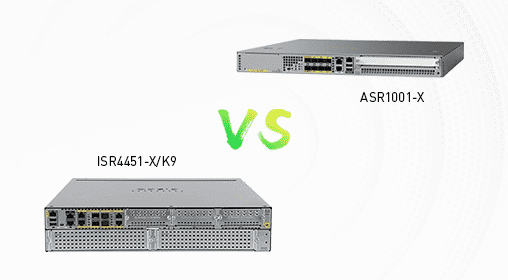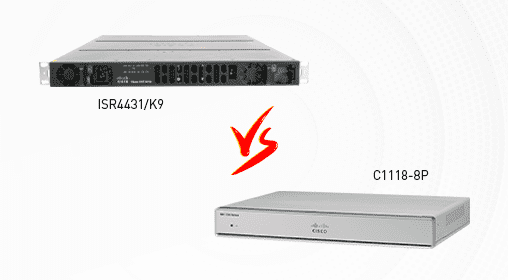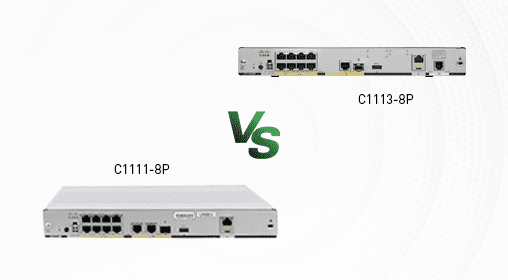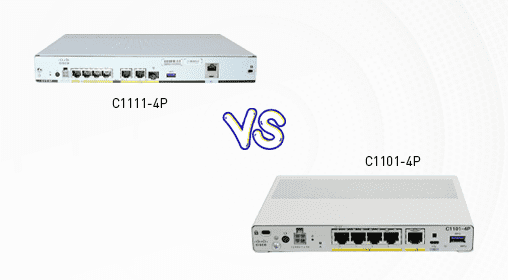














Cisco's Compact Warriors: The C1111-4PLTEEA and C1117-4PLTELAWZ Deep Dive
Choosing between two routers from the same family, especially when their names look as complex as a secret code, can feel like a daunting task. It's not about the flashiest specs on paper; it's about which one truly fits the rhythm of your daily operations. Today, we're getting our hands on two members of Cisco's 1100 Series Integrated Services Routers (ISRs): the C1111-4PLTEEA and the C1117-4PLTELAWZ. Both are designed to bring enterprise-grade networking to branch offices and small businesses, packing security, connectivity, and management into a compact box. But as we'll see, one is a capable all-rounder, while the other is built for a more demanding future.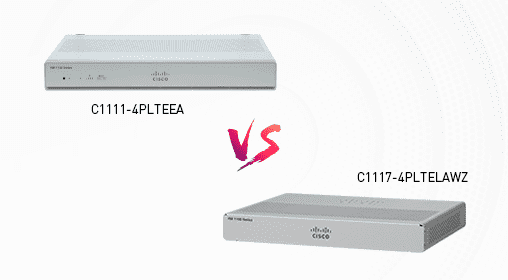
The first thing that strikes you about these devices is their purpose-driven design. They are not meant for your living room; they are workhorses for a business environment. The C1111-4PLTEEA follows the well-established form factor for the 1100 series, a compact unit that can be rack-mounted or placed on a shelf. The C1117-4PLTELAWZ, as a later or potentially more specialized model, might share a similar footprint but often incorporates design refinements for better heat dissipation or more accessible port arrangements, which is crucial for long-term stability. Both are built to be tough, with the robust quality you'd expect from Cisco hardware designed for continuous operation.
The Core of the Machine: A Technical Breakdown
The real differences emerge when you look under the hood. The C1117-4PLTELAWZ typically represents an evolution, offering more muscle to handle heavier workloads and more advanced services. The following table lays out the key specifications that set them apart.
|
Core Parameter |
Cisco C1111-4PLTEEA |
Cisco C1117-4PLTELAWZ |
|---|---|---|
|
Fixed DRAM |
4 GB |
Typically higher, often 8 GB (supports advanced SD-WAN security)
|
|
Fixed Flash |
4 GB |
Typically higher, often 8 GB or more
|
|
LTE Connectivity |
LTE Advanced |
Likely LTE Advanced Pro or newer standard (e.g., CAT18)
|
|
GE RJ-45 Ports |
4 x Gigabit Ethernet LAN ports |
Likely 4 or more |
|
PoE (Power over Ethernet) Capability |
Information varies by specific model |
Often supported, potentially with higher budget (e.g., PoE+)
|
|
WAN Flexibility |
1-2 Gigabit Ethernet WAN ports, Combo SFP port for fiber
|
Similar or expanded (e.g., additional SFP+ ports) |
|
Expected Throughput |
Data: Up to 1 Gbps; IPsec VPN: Lower than C1117
|
Typically higher, for more demanding application handling and VPN traffic |
This table tells a clear story. The C1117's potential for 8GB of memory is a significant advantage. This isn't just a number; it translates directly to the router's ability to run intensive services like advanced threat protection, deep packet inspection, and complex SD-WAN policies without slowing down. Furthermore, if the C1117-4PLTELAWZ supports a more advanced LTE standard like LTE Advanced Pro, it means faster and more reliable cellular failover or primary WAN connectivity, which is a lifeline for business continuity. The potential inclusion of Power over Ethernet is another practical differentiator, allowing you to power devices like wireless access points or IP phones directly from the router, which simplifies cabling and reduces clutter.
Living with the Routers: Functionality and Daily Experience
For the person managing the network, the experience differs in headroom and convenience. The C1111-4PLTEEA is a solid, reliable performer for a standard small office setup. It handles basic VPN tunnels, firewall policies, and SD-WAN for a handful of users with competence. Configuration through Cisco's vManage or IOS XE is well-documented, making deployment straightforward for someone with networking experience.
The C1117-4PLTELAWZ, with its resource advantage, is built for a more dynamic environment. If you're planning to support a growing number of users, leverage bandwidth-intensive cloud applications, or implement a zero-trust security model, this is the router that won't hold you back. The higher throughput means that even with all security features turned on, your internet connection won't become a bottleneck. The potential fanless design in such models is also a quiet benefit for office spaces where noise matters.
When we talk about value, it's not just about the initial price tag. The C1111-4PLTEEA represents a solid entry point into the Cisco ecosystem for a business with well-defined, stable needs. It offers excellent value if its specs match your current requirements exactly. However, the C1117-4PLTELAWZ makes its case through future-proofing. Investing in the more powerful model can be a smarter financial decision if you anticipate growth. It prevents the costly scenario of hitting the performance ceiling of your router and needing a premature upgrade. It's the classic choice between buying for today versus investing for tomorrow.
The Final Verdict: Making Your Choice
So, which path do you take? It boils down to your business roadmap.
The Cisco C1111-4PLTEEA is an excellent, dependable choice for a small business or remote site with predictable needs. If your primary requirement is to provide secure, reliable wired and wireless (via LTE) connectivity for a stable team without the need for advanced PoE or the highest level of application performance, this router will serve you faithfully.
The Cisco C1117-4PLTELAWZ is the forward-looking engine. Choose this one if you're building a network that needs to scale, if you require the utmost in application performance and security, or if features like advanced LTE failover and PoE are critical to your setup. Its superior hardware foundation provides the peace of mind that comes with having ample room to grow.
Both routers deliver on the core Cisco promise of security and reliability. Your decision simply hinges on how much of that power you need today, and how much you'll likely need down the line.
